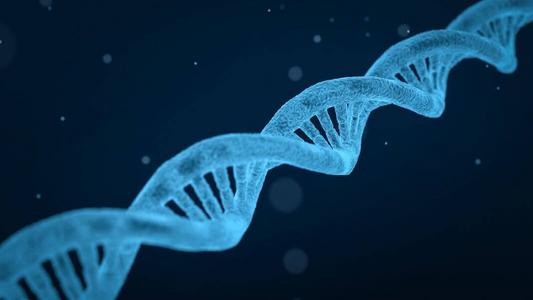Author: BalanceGenics Anti-aging Research Team (How100.com)
Running, as a popular aerobic exercise, offers significant benefits for weight loss and cardiovascular health. However, for some individuals with a higher body weight, the idea of starting to run can be daunting. They might consider fast walking as an alternative but have heard that fast walking doesn't help with weight loss at all.

A study published in the Journal of Sports Medicine pointed out that slow jogging for 30 minutes burns about 1.5 times the calories of fast walking for 60 minutes. This data undoubtedly deepens the anxiety: does fast walking really fail to achieve the weight loss effects of slow jogging?
Scientific Insights
While slow jogging burns more calories, fast walking also has its unique advantages. Fast walking is less impactful on the joints, making it suitable for prolonged exercise. For those just beginning their weight loss journey or those with joint issues, fast walking is a safer choice.
A study examining the effects of different exercise intensities on weight loss found that although fast walking burns fewer calories, its moderate intensity allows for longer durations, which can also result in significant weight loss overall.
Differences in Weight Loss Effects: Analyzing the Root Causes
When discussing the differences in weight loss effects between fast walking and slow jogging, we need to delve into the root causes. Here are three key aspects to consider: exercise intensity, calorie consumption, and individual physique.
Exercise Intensity
Slow jogging has a higher intensity compared to fast walking, which directly leads to an increased heart rate, thereby more effectively promoting calorie burning. According to the American College of Sports Medicine (ACSM), the heart rate during slow jogging is typically about 20% higher than during fast walking, meaning that slow jogging can burn more energy in the same amount of time.
Calorie Consumption
Calorie consumption is a key indicator of the effectiveness of exercise for weight loss. Studies have shown that slow jogging for 30 minutes typically burns between 300-400 calories, while fast walking for 60 minutes burns between 200-300 calories. This difference directly impacts the efficiency of weight loss.
Individual Physique
Different individuals' metabolic rates, muscle mass, and body adaptability affect calorie consumption during exercise. Friends with higher muscle mass may experience more significant weight loss effects from slow jogging, as muscle tissue consumes more energy during exercise.
Common Misconceptions
Some people believe that fast walking cannot achieve the weight loss effects of slow jogging because it burns too few calories. However, scientific research reveals a different truth. A study published in the Journal of the American Heart Association indicates that although slow jogging burns more calories, fast walking, due to its low impact, can be a safer and more sustainable weight loss method. The study also found that fast walking can increase metabolic rate, continuing to burn calories even after exercise, which is a significant advantage for long-term weight loss. Therefore, while fast walking for 60 minutes may not match the calorie burn of slow jogging for 30 minutes, its weight loss effects are still noteworthy.
Optimizing Your Running Weight Loss Plan
Based on the analysis of the weight loss effects of fast walking and slow jogging, here are some specific, practical solutions to help you optimize your exercise weight loss plan:
- Alternate Training: Don’t limit yourself to a single form of exercise. Try combining fast walking and slow jogging. For example, start with 10 minutes of fast walking, then 20 minutes of slow jogging, followed by another 10 minutes of fast walking. This can reduce the difficulty of exercise compared to pure running, while still achieving good weight loss results.
- Increase Exercise Duration: If you choose fast walking as your main weight loss method, you can increase the exercise duration appropriately, such as extending from 60 minutes to 75 minutes or longer, to compensate for the lower calorie burn.
- Incorporate Interval Training: Add short bursts of slow jogging or fast running into your fast walking routine to form interval training. This can increase exercise intensity, burn more calories, and improve cardiovascular function.
- Pay Attention to Diet: Exercise is just one part of weight loss; diet is equally important. Maintain a balanced diet, reduce the intake of high-calorie, high-fat foods, and increase the proportion of vegetables and fruits.
- Exercise Logging: Logging your exercise is a great way to self-monitor. By tracking calorie consumption and intake, you can better adjust your plan and maintain motivation for weight loss.
- Listen to Your Body: Everyone’s body responds differently. Pay attention to your body’s feedback, and if you feel uncomfortable, adjust the intensity and method of exercise accordingly. The best running state is not gasping for breath but feeling like you could run more after finishing.
By implementing these practical solutions, you can more effectively incorporate fast walking and slow jogging into your weight loss plan, achieving healthy and sustainable weight loss results.
Conclusion
If you are looking for a gentle and sustainable way to lose weight, fast walking is a good choice. If you aim for higher calorie consumption, combining slow jogging with fast walking and progressing gradually is recommended. For exercise and weight loss, persistence is more important than the method. When you start, no matter the method, success is not far away!
BalanceGenics 15 Days Gut Cleanse - Eat Without Stress
Struggling with constipation, bloating, or bad breath? BalanceGenics 15-Day Gut Cleanse is here to help you tackle these issues and rejuvenate your body.
- 【Natural Ingredient Formula】: Carefully selected 8 natural plant ingredients, gentle and effective, safe with no side effects.
- 【Efficient Colon Cleanse and Detox】: Senna Leaf and Cascara Sagrada Bark work together to quickly relieve constipation and eliminate toxins.
- 【Promotes Digestive Health】: Psyllium Husk Powder and Flaxseed Powder absorb intestinal waste, lubricate the intestines, and improve digestive function.
- 【Repairs Intestinal Mucosa】: Aloe Vera Leaf Gel and Lactobacillus Acidophilus repair damaged intestinal
mucosa and enhance intestinal immunity.
- 【Gentle and Natural】--- Formulated with natural ingredients to support your body's natural metabolism process.
- 【GENTLE& HEALTHY】 --- The item is a quick, gentle feature, that will make your colon easy and healthy.
- 【Quick Results】--- Experience the cleansing effects within 12-24 hours of taking the first pill, promoting regular bowel movements and a healthier gut.
- 【Easy-to-Follow Regimen】--- Simply start with one pill and increase to two if needed, taking daily for up to 15 days. Allow your gut to rest for 6-8 weeks before repeating the product.
- 【MULTI-PURPOSE】--- Ideal for those people suffering from constipation and bloating or those seeking to cleanse the bowel and colon.
BalanceGenics: Personalized One-Stop Anti-aging Platform (How100.com)
Launched in California in 2018, BalanceGenics ("How100") started out as a solution to our own needs. Our team consists of seasoned health experts, doctors, and entrepreneurs with a common interest in anti-aging.
We use the latest findings from global leading longevity scientists to develop products and services.
BalanceGenics' Mission is to create personalized solutions to live longer but stay younger.
We will be your personalized one-stop anti-aging platform and help you stay younger for longer.
References:
American College of Sports Medicine. (2018). ACSM's guidelines for exercise testing and prescription. Lippincott Williams & Wilkins.
Donnelly, J. E., et al. "Energy expenditure of walking and running comparison with prediction equations." Medicine and science in sports and exercise 33.10 (2001): 1721-1727.
Williams, P. T., and P. D. Thompson. "The relationship of walking intensity to total and cause-specific mortality." JAMA 282.20 (1999): 1915-1920.
LaForgia, J., et al. "The effect of exercise intensity on excess post-exercise oxygen consumption." Journal of Strength and Conditioning Research 24.10 (2010): 2752-2758.







